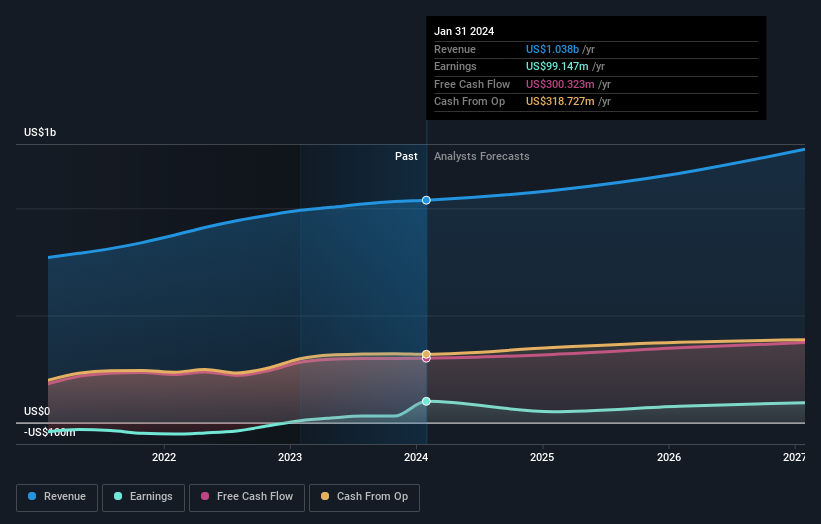Should You Think About Buying Box, Inc. (NYSE:BOX) Now?
While Box, Inc. (NYSE:BOX) might not have the largest market cap around , it led the NYSE gainers with a relatively large price hike in the past couple of weeks. The company is inching closer to its yearly highs following the recent share price climb. As a mid-cap stock with high coverage by analysts, you could assume any recent changes in the company’s outlook is already priced into the stock. But what if there is still an opportunity to buy? Let’s examine Box’s valuation and outlook in more detail to determine if there’s still a bargain opportunity.
View our latest analysis for Box
Is Box Still Cheap?
According to our price multiple model, which makes a comparison between the company's price-to-earnings ratio and the industry average, the stock price seems to be justfied. We’ve used the price-to-earnings ratio in this instance because there’s not enough visibility to forecast its cash flows. The stock’s ratio of 42.87x is currently trading slightly below its industry peers’ ratio of 45.01x, which means if you buy Box today, you’d be paying a reasonable price for it. And if you believe Box should be trading in this range, then there isn’t much room for the share price to grow beyond the levels of other industry peers over the long-term. In addition to this, it seems like Box’s share price is quite stable, which could mean there may be less chances to buy low in the future now that it’s trading around the price multiples of other industry peers. This is because the stock is less volatile than the wider market given its low beta.
What kind of growth will Box generate?
Investors looking for growth in their portfolio may want to consider the prospects of a company before buying its shares. Although value investors would argue that it’s the intrinsic value relative to the price that matter the most, a more compelling investment thesis would be high growth potential at a cheap price. However, with a negative profit growth of -6.3% expected over the next couple of years, near-term growth certainly doesn’t appear to be a driver for a buy decision for Box. This certainty tips the risk-return scale towards higher risk.
What This Means For You
Are you a shareholder? BOX seems priced close to industry peers right now, but given the uncertainty from negative returns in the future, this could be the right time to reduce the risk in your portfolio. Is your current exposure to the stock optimal for your total portfolio? And is the opportunity cost of holding a negative-outlook stock too high? Before you make a decision on BOX, take a look at whether its fundamentals have changed.
Are you a potential investor? If you’ve been keeping tabs on BOX for a while, now may not be the most optimal time to buy, given it is trading around industry price multiples. This means there’s less benefit from mispricing. Furthermore, the negative growth outlook increases the risk of holding the stock. However, there are also other important factors we haven’t considered today, which can help gel your views on BOX should the price fluctuate below the industry PE ratio.
It can be quite valuable to consider what analysts expect for Box from their most recent forecasts. Luckily, you can check out what analysts are forecasting by clicking here.
If you are no longer interested in Box, you can use our free platform to see our list of over 50 other stocks with a high growth potential.
Have feedback on this article? Concerned about the content? Get in touch with us directly. Alternatively, email editorial-team (at) simplywallst.com.
This article by Simply Wall St is general in nature. We provide commentary based on historical data and analyst forecasts only using an unbiased methodology and our articles are not intended to be financial advice. It does not constitute a recommendation to buy or sell any stock, and does not take account of your objectives, or your financial situation. We aim to bring you long-term focused analysis driven by fundamental data. Note that our analysis may not factor in the latest price-sensitive company announcements or qualitative material. Simply Wall St has no position in any stocks mentioned.

